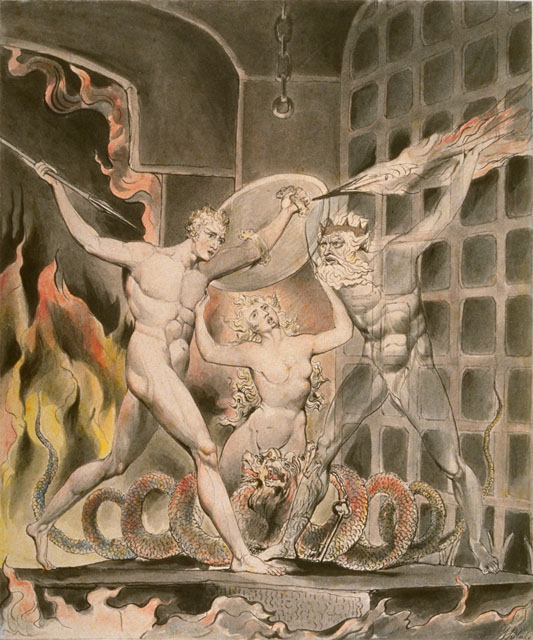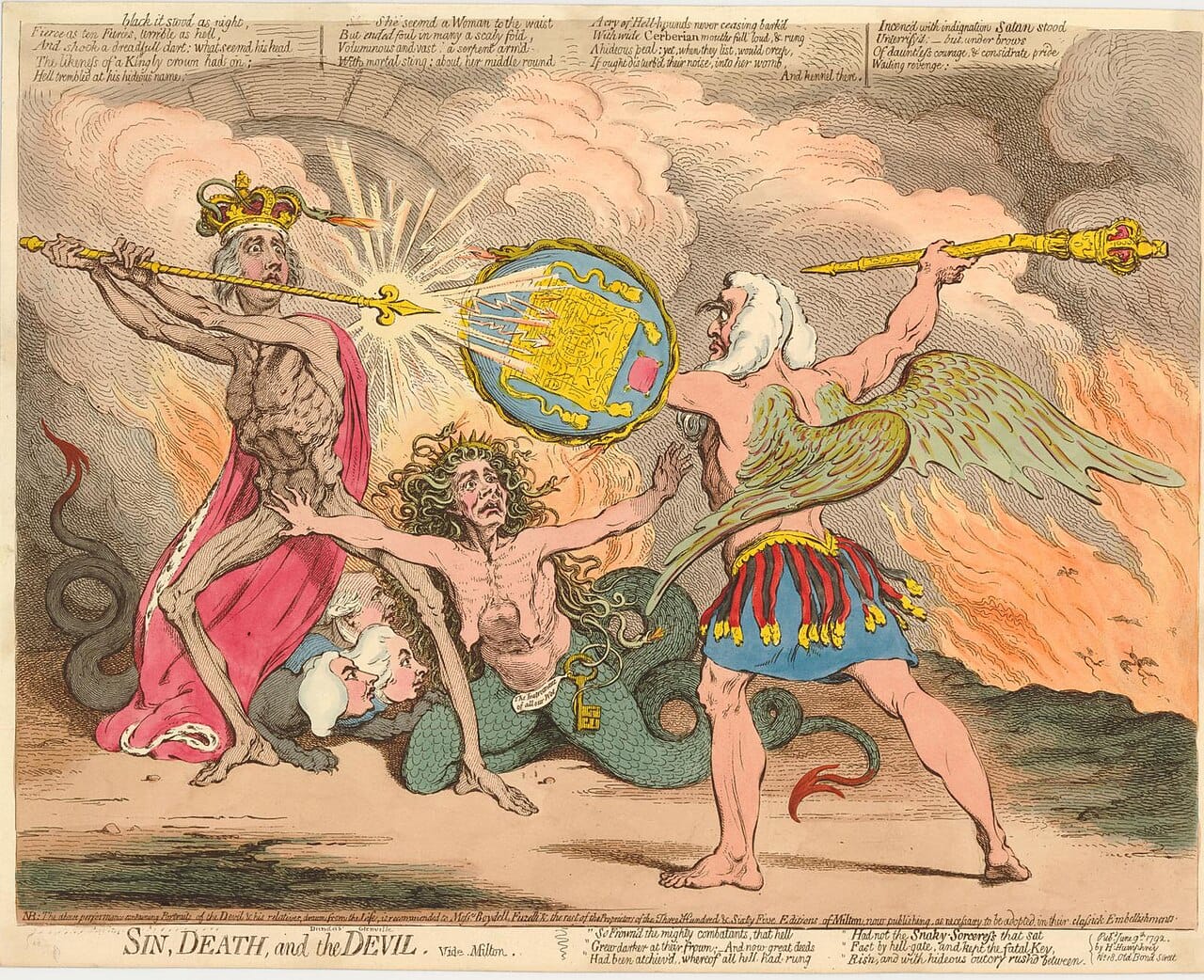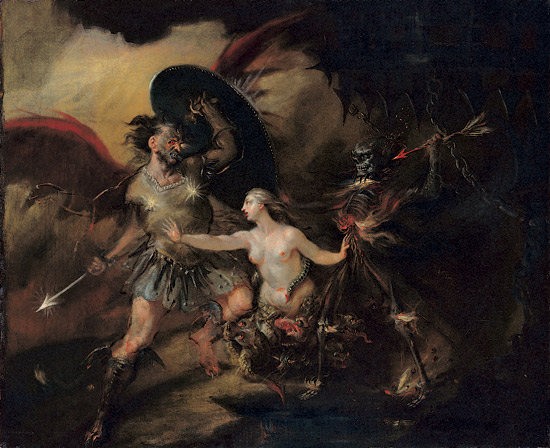William Blake's 'Satan, Sin, and Death: Satan Comes to the Gates of Hell'

Satan, Sin, and Death: Satan Comes to the Gates of Hell: an illustration by William Blake to Milton’s Paradise Lost, circa 1807. That’s Satan on the left, Sin (she is half serpent) in the middle and her half-transparent son Death on the right.

At this time, Blake became completely caught up in the world of Paradise Lost and he wrote his famous hymn Jerusalem – Britain’s unofficial national anthem – as the preface for Milton: a Poem. This is a lengthy and difficult apocalyptic poem with a fascinating hallucinatory quality and many of Blake’s contemporaries concluded that he was quite mad, including Blake’s patron, who appears in the poem as Satan! In terms of a storyline, Milton returns from heaven to the earth as a meteor, a “falling star,” and unites with Blake via the Imagination (and Blake’s left foot) and together they explore the cosmic relationship between the living poet and his great predecessor in way that echoes the way Dante invoked Virgil in the Divine Comedy.

Not long before Blake's painting, the political satirist James Gillray made use of Milton in the infamous 1792 caricature below, which shows the Queen in the middle (Sin), protecting Prime Minister Pitt (Death), with the King's crown on, from an irate Chancellor Thurlow (Satan):

And from before that, William Hogarth's version, in 1740:

